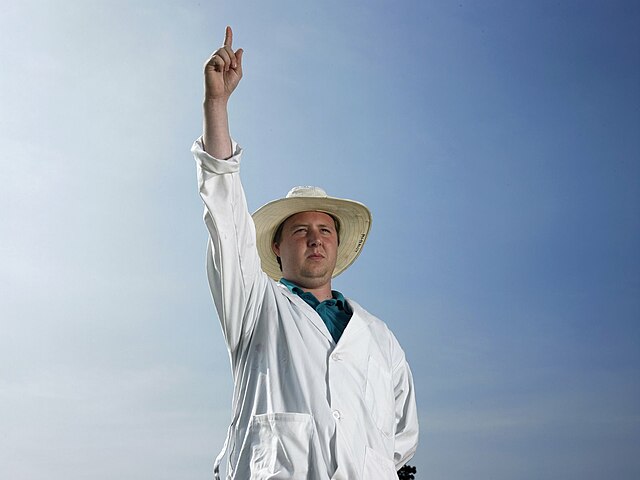In cricket, an umpire is a person who has the authority to make decisions about events on the cricket field according to the Laws of Cricket. Besides making decisions about legality of delivery, appeals for wickets and general conduct of the Game in a legal manner, the umpire also keeps a record of the deliveries and announces the completion of an over.
The normal positions for the two on-field umpires are shown with the blue squares.
An umpire signalling the batsman as out
An umpire signalling a No-ball
An umpire signals a wide in a junior cricket match.
Cricket is a bat-and-ball game that is played between two teams of eleven players on a field at the centre of which is a 22-yard (20-metre) pitch with a wicket at each end, each comprising two bails balanced on three stumps. Two players from the batting team stand in front of either wicket, with one player from the fielding team bowling the ball towards the striker's wicket from the opposite end of the pitch. The striker's goal is to hit the bowled ball and then switch places with the nonstriker, with the batting team scoring one run for each exchange. Runs are also scored when the ball reaches or crosses the boundary of the field or when the ball is bowled illegally.
Shaun Pollock of South Africa bowls to Michael Hussey of Australia during the 2005 Boxing Day Test match at the Melbourne Cricket Ground
A medieval "club ball" game involving an underarm bowl towards a batter. Ball catchers are shown positioning themselves to catch a ball. Detail from the Canticles of Holy Mary, 13th century.
Evolution of the cricket bat. The original "hockey stick" (left) evolved into the straight bat from c. 1760 when pitched delivery bowling began.
Francis Cotes, The Young Cricketer, 1768








